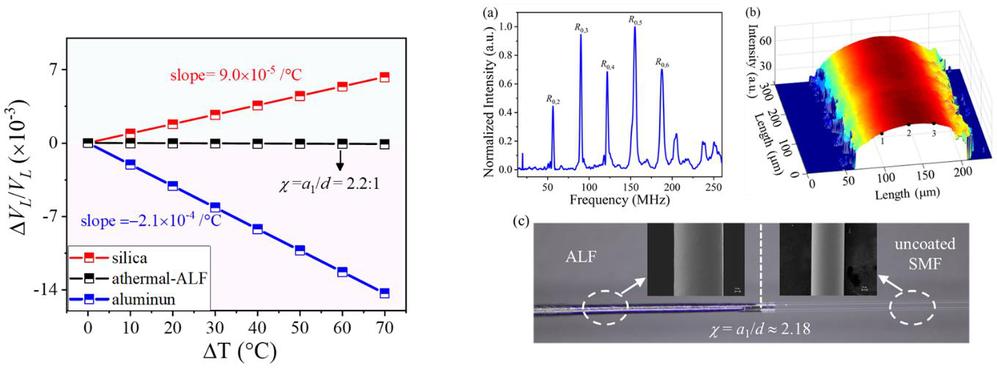Address: No. 92, Xidazhi Street, Nangang District, Harbin



JOIN-USHIT sincerely invite talents from both home and aproad to join in the new course of constructing first-class universities. |
Recently, the research group headed by Prof. Yongkang Dong from the School of Astronautics has achieved a significant breakthrough in the field of forward-stimulated Brillouin scattering. The research results have been published in Laser & Photonics Reviews under the title “Athermal Forward Stimulated Brillouin Scattering”.
Forward-stimulated Brillouin scattering (F-SBS) is a nonlinear acousto-optic coupling effect. Leveraging the unique inside-out sensing capability of transverse resonant acoustic waves, it demonstrates significant potential for applications in environmental substance identification, energy exploration, and smart healthcare. However, in practical applications, environmental temperature fluctuations can cause significant drift in the resonance frequency of transverse acoustic waves. This temperature sensitivity primarily originates from the thermal dependence of the material's acoustic velocity, which severely restricts the stability of F-SBS in temperature-sensitive environments and poses a critical challenge to high-precision sensing. Current technologies struggle to overcome this limitation through innovations in sensing mechanism.
In response to this technical challenge, Prof. Yongkang Dong's research group proposed the athermal F-SBS mechanism. By integrating theoretical modeling, multiphysics simulations, and experimental validation, they innovatively employed aluminum-coated optical fibers to address the long-standing temperature sensitivity issue in F-SBS technology. This study employed an aluminum coating layer as a thermal compensator. Through precise control of the ratio between the aluminum coating thickness and the optical fiber cladding radius, the negative temperature-induced effect of the coating was shown to completely offset the positive temperature-induced effect of the cladding on acoustic wave propagation. As a result, the equivalent acoustic velocity-temperature coefficient of the transverse acoustic waves in the aluminum-coated optical fiber approached zero, thereby achieving athermal F-SBS. In addition, by modulating the spatial weight distribution of the aluminum coating, precise control over the temperature response of the resonance frequency in F-SBS can further be achieved. The novel athermal F-SBS mechanism proposed by the research group not only facilitates the application of F-SBS technology in extreme conditions (e.g., aerospace and deep-sea exploration) but also provides innovative theoretical and technical foundations for temperature compensation design in multi-waveguide optoacoustic devices, such as Brillouin fiber lasers and acousto-optic modulators.
Harbin Institute of Technology is the sole corresponding institution. Yuli Ren is the first author, and Prof. Yongkang Dong is the sole corresponding author. This work was supported by the National Key Research and Development Program of China and the National Natural Science Foundation of China.
Link to the paper:https://doi.org/10.1002/lpor.202402071

Figure 1. Design and characterization of the ratio of aluminum layer thickness to cladding radius in aluminum-coated optical fibers

Figure 2. Experimental results of athermal forward stimulated Brillouin scattering